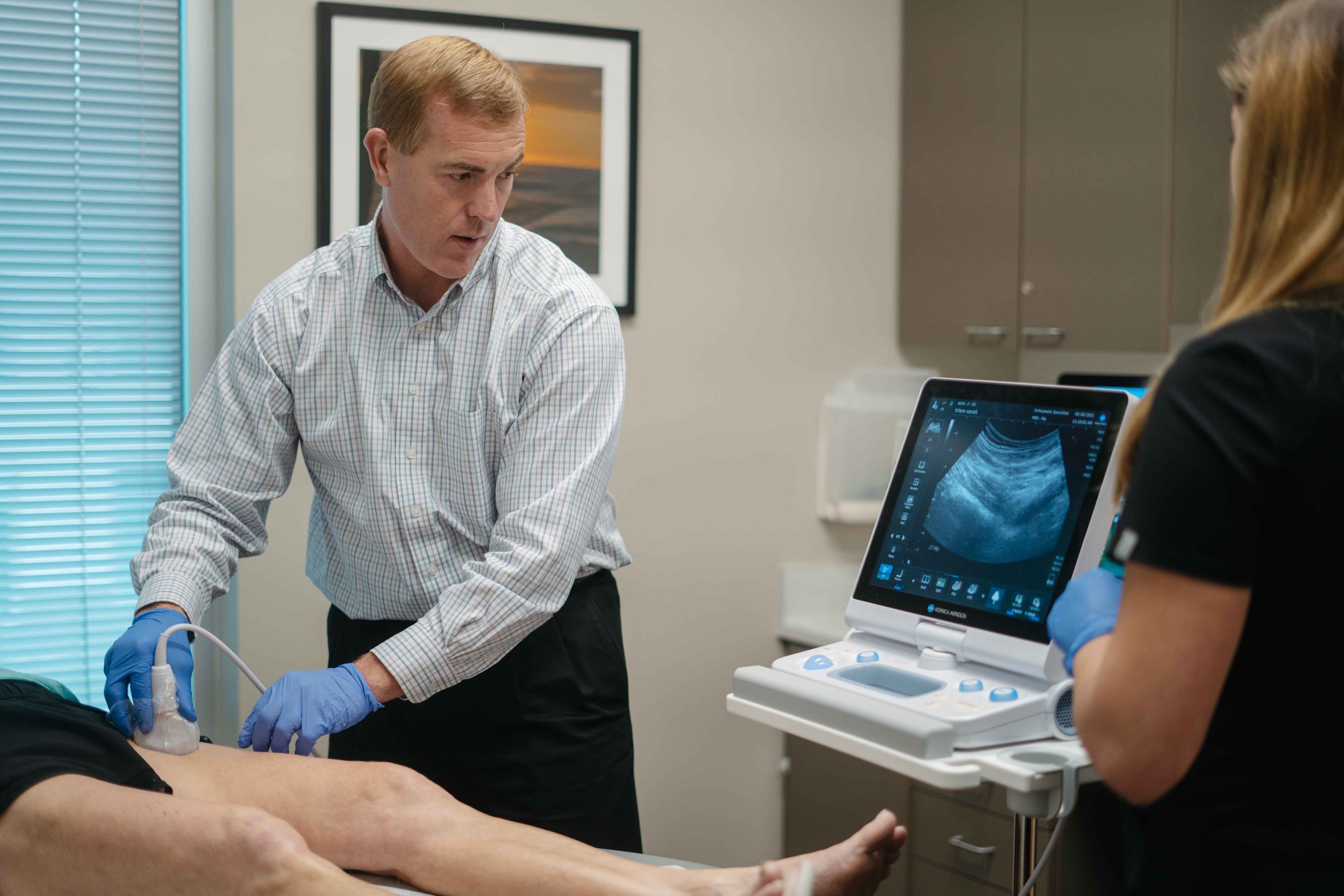Hip Replacement Recovery: A Detailed Timeline
Has chronic hip pain left you struggling to keep up with your daily activities? Hip replacement surgery can be a life-changing procedure, offering a path back to mobility and a pain-free life. But what happens after surgery?
Navigating the recovery process can be daunting. This blog post is here to guide you every step of the way. We'll provide a comprehensive overview of the hip replacement recovery process and timeline, from your hospital stay to returning to your favorite activities.
Whether you've recently undergone surgery or are just starting to explore your options, we’ll equip you with the knowledge and tools you need for a smooth and successful recovery. So, get ready to conquer hip pain and get back on your feet faster!
The First Few days of recovery after hip replacement surgery
The first few days after hip replacement surgery are crucial for initiating recovery and setting the stage for a smooth journey. Here's what you can expect during this initial phase:
Hospital Stay:
Pain Management: Your primary concern will likely be pain management. The hospital staff will provide medication to keep you comfortable, and they'll teach you pain management techniques like relaxation exercises.
Physical Therapy: Physical therapy starts early, often on the same day or the day after surgery. Therapists will guide you through gentle exercises to improve circulation, prevent blood clots, and begin regaining basic mobility, such as getting in and out of bed safely.
Medication Schedule: You'll be on a specific medication schedule including pain medication, antibiotics to prevent infection, and blood thinners to reduce the risk of blood clots.
Discharge from the Hospital:
Once you've met certain milestones like walking with assistance and managing pain effectively, you'll be discharged from the hospital, typically within 3-4 days. Here's what to prepare for at home:
Equipment: You might need assistive devices like a walker or cane to help with safe mobility during the initial recovery phase.
Home Modifications: Minor modifications like installing grab bars in the bathroom and a raised toilet seat can significantly improve safety and independence at home.
Recovery Timeline: from the first week to six months post-op
Hip replacement recovery is a gradual process, with milestones achieved over several weeks and months. Here's a breakdown of the recovery timeline, highlighting key points for each phase:
Weeks 1-4:
Focus: Pain management, wound care, regaining basic mobility.
Activities: Gentle physical therapy exercises, walking with assistance, practicing stairs with therapist guidance.
Pain Level: Moderate pain, well-controlled with medication.
Restrictions: Avoid strenuous activities, lifting heavy objects, and excessive bending.
Weeks 4-8:
Focus: Increasing physical therapy intensity, building strength and range of motion.
Activities: More challenging physical therapy exercises, walking independently with a cane or walker (gradually transitioning to a cane or no device).
Pain Level: Pain should decrease significantly.
Restrictions: Continue to avoid strenuous activities and heavy lifting.
Months 2-6:
Focus: Gradual return to daily activities, building endurance and stamina.
Activities: Most daily activities like housework, climbing stairs, and driving (with your doctor's approval) become manageable.
Pain Level: Minimal pain, occasional discomfort.
Restrictions: May still need to avoid high-impact activities like running or jumping.
Beyond 6 Months:
Focus: Continued improvement, potential return to higher-impact activities (consult with your doctor).
Activities: Many patients can resume most activities they enjoyed before surgery, with proper precautions.
Pain Level: Minimal to no pain.
Restrictions: May have some limitations depending on the type of activity and your individual progress.
Important Note: This is a general timeline, and recovery pace can vary depending on factors like your overall health, pre-surgery activity level, and any complications. Always follow your doctor's specific instructions and rehabilitation plan for optimal results.
Pain Management After Hip Replacement Surgery
Pain management is a crucial aspect of a smooth recovery after hip replacement surgery. Here's a breakdown of key strategies to effectively manage pain and optimize your comfort:
Medication:
Prescription Pain Medication: Your doctor will prescribe pain medication to manage discomfort during the initial recovery phase. It's essential to follow their instructions regarding dosage and frequency to ensure proper pain control while minimizing side effects.
Opioid-Sparing Protocols and Iovera Treatment: At San Antonio Orthopaedic Specialists, we prioritize minimizing reliance on opioid pain medication. We offer a variety of opioid-sparing protocols to manage pain effectively while reducing the risk of side effects.
One of our innovative pain management options is Iovera™ therapy. Iovera™ utilizes pulsed radiofrequency energy to target specific nerve pathways, providing localized pain relief for extended periods.
Over-the-counter pain relievers: Once your doctor approves, you can incorporate over-the-counter pain relievers like acetaminophen (Tylenol) to further manage pain, especially as prescription medication needs decrease.
Non-medication Techniques:
Ice Therapy: Applying ice packs wrapped in a towel to the surgical site for 15-20 minutes at a time, several times a day, can help reduce pain and swelling.
Heat Therapy: After consulting your doctor, you can incorporate heat therapy later in recovery to improve circulation and ease muscle stiffness.
Physical Therapy: Regular physical therapy exercises not only improve mobility but also promote pain relief by strengthening muscles and improving blood flow around the surgical site.
Relaxation Techniques: Techniques like deep breathing exercises and meditation can help manage pain by promoting relaxation and reducing stress.
Additional Tips:
Maintain proper positioning: Following proper positioning instructions during rest and sleep can help minimize pain and discomfort.
Elevate your leg: When resting or sleeping, elevate your operated leg above the level of your heart to reduce swelling and promote comfort.
Manage your weight: Maintaining a healthy weight reduces stress on the new hip joint and can contribute to long-term pain management.
Remember: Don't hesitate to communicate with your doctor if your pain is not adequately controlled by medication or if you experience any concerning side effects. They can adjust your pain management plan to ensure your comfort and a smooth recovery.
Preventing Complications After Hip Replacement Surgery
While hip replacement surgery is a safe and successful procedure, there are some potential complications to be aware of and steps you can take to minimize the risk:
Consume a Nutritious Diet: A nutritious diet plays a vital role in your recovery from hip replacement surgery. Consuming a well-balanced diet rich in fruits, vegetables, whole grains, and lean protein offers a multitude of benefits. These include supporting tissue healing and promoting bone health, managing weight effectively to reduce stress on your new hip, and maintaining energy levels for crucial physical therapy exercises.
Blood Clots: Blood clots are a serious complication after any surgery. Your doctor will likely prescribe blood thinners to reduce the risk. Be diligent about taking them as directed and perform regular ankle pumps and leg stretches to improve circulation.
Infection: Maintaining a clean wound and following proper hygiene practices are crucial to prevent infection. Report any signs of redness, swelling, or fever to your doctor immediately.
Dislocation: Following your doctor's instructions regarding activity limitations and proper movement techniques can significantly reduce the risk of dislocating the new hip joint.
If you experience any of the following symptoms, contact your doctor right away:
Severe pain, redness, or swelling around the incision site.
Fever or chills.
Difficulty breathing or chest pain.
Redness or increased warmth in your calf.
Hip replacement surgery can be a life-changing experience, offering relief from chronic pain and the opportunity to regain your mobility and independence. By following a recovery plan and working closely with your hip specialist and physical therapist, you can navigate your recovery journey with confidence.
At San Antonio Orthopaedic Specialists, we understand the challenges of hip pain and the limitations it can impose on your daily activities. Following hip replacement surgery, our team is dedicated to guiding you through a personalized recovery plan to help you regain mobility, strength, and return to the activities you enjoy.



